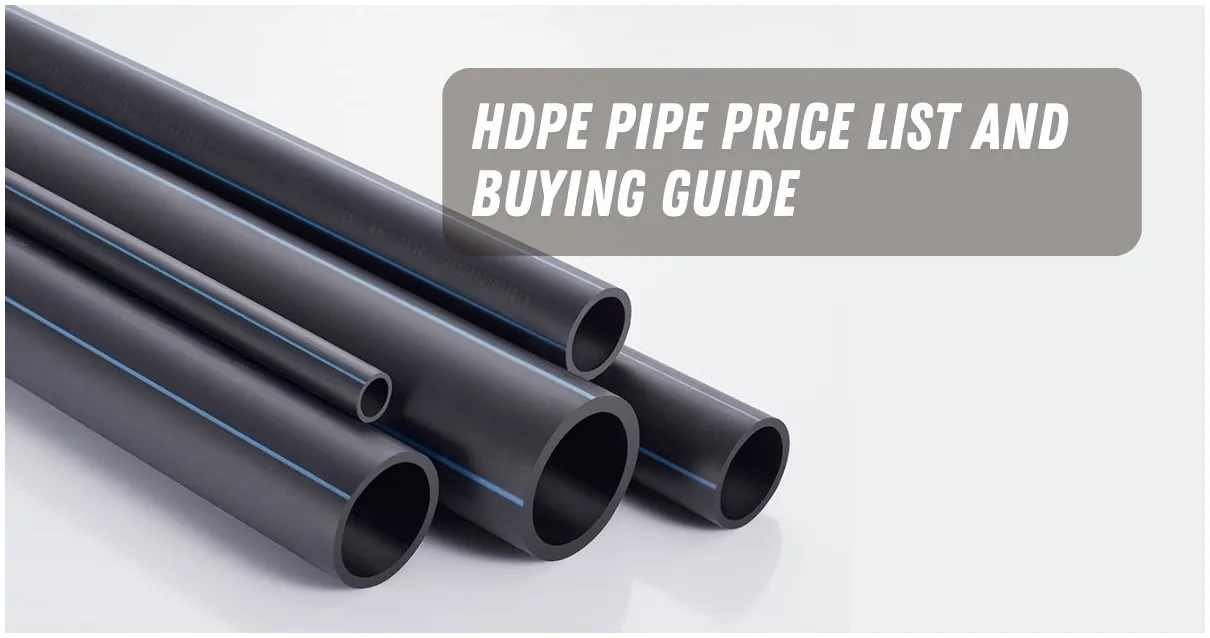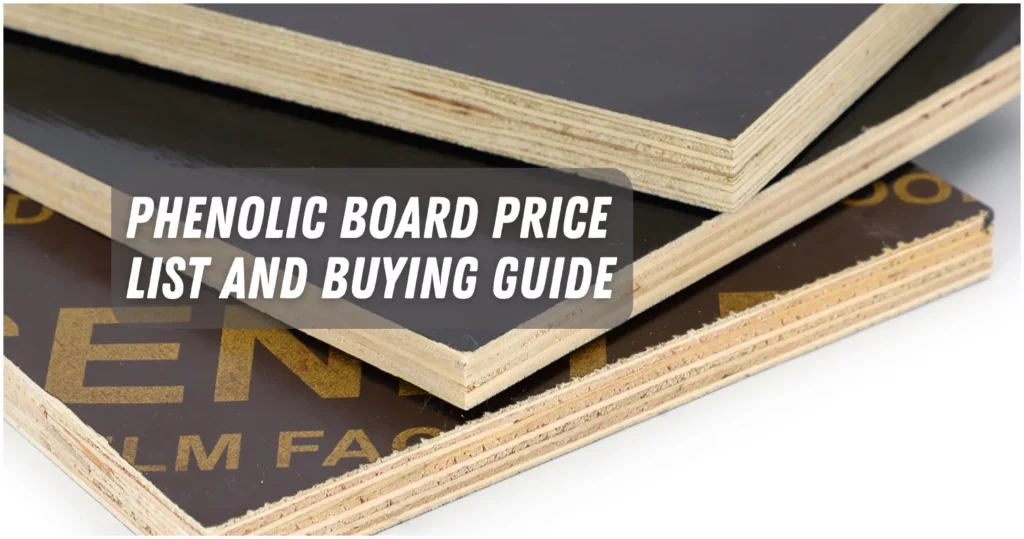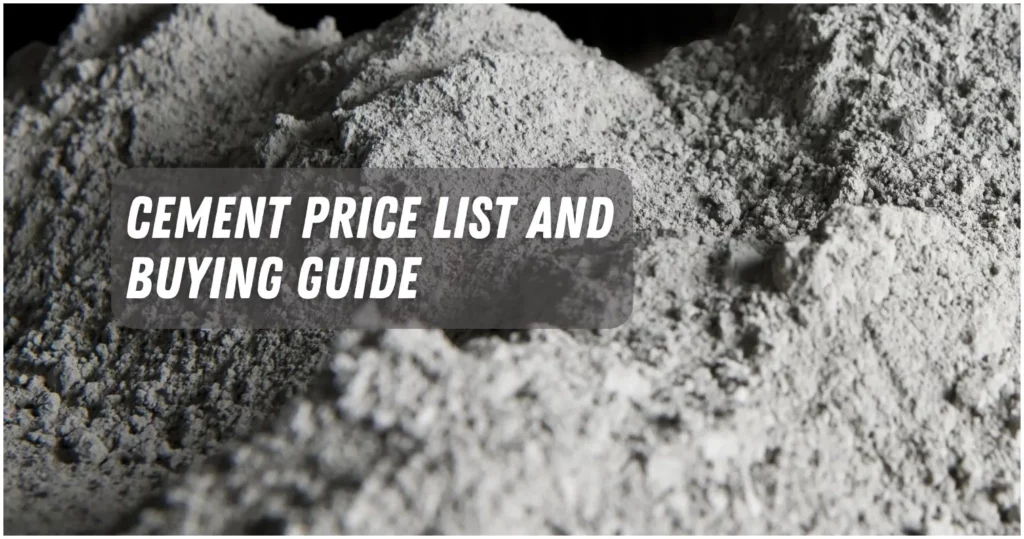Do you need a trusted and affordable price for piping solution, don’t look any further than HDPE pipe.
Made from high-density polyethylene, this thermoplastic material is very resistant to rust, abrasion, and chemicals.
In this article, we will talk about the many uses of HDPE pipe, as well as its sizes and HDPE pipe prices in the Philippines, which went from ₱56 to ₱38,558.
Find out what the pros and cons are of using HDPE pipe for your water supply, irrigation, drainage, or sewer system needs.
HDPE Pipe Meaning

What is HDPE Pipe? HDPE is High-density polyethylene that used to make pipe, which is a type of plastic pipe.
In the mid-1950s, it became popular, and since then, it has been used in many different ways.
Most of the pipes are black because carbon black was added to protect them from UV light.
One of the best things about HDPE pipes is that they are bendable and won’t break when bent.
They can work well in temperatures from 0 to +80°C. It safe to use to move oil, chemicals, gas, and even drinking water.
HDPE Pipe Uses
This pipe is used in many different fields and businesses for many different things. Some of the most popular uses are:
- Water supply: HDPE pipe is used to move potable water, irrigate crops, protect against fires, and make hydroelectric power.
- Wastewater: HDPE pipe is used to move wastewater, drain stormwater, connect to clean sewers, and get rid of industrial waste.
- Mining: In mining activities, HDPE pipe is used to move slurry, tailings, leachate, dewatering, ventilation, and gas extraction.
- Industrial: In the manufacturing industry, HDPE pipe is used to move chemicals, gases, liquids, and solids. It can also be used to cool water, distribute compressed air and steam, and move steam.
- Gas: HDPE pipe is used to move natural gas, biogas, gas from landfills, and gas from flare devices.
These are just a few of the many ways HDPE pipe can be used in different businesses.
Types of HDPE Pipe
There are different kinds of HDPE pipes that are all made for different uses. Here are a few examples:
Geopipe

These HDPE pipes are used for sub-drain systems, underground drainage, seepage drainage, and mines. They can have holes in them or not.
HDPE Corrugated Pipe

The surface of this kind of HDPE pipe is curved, which makes it strong and stiff. It is often used to clear storm water, build culverts, connect roads, and make sewer systems.
HDPE Spiral Pipe

HDPE spiral pipes are flexible and can withstand outside loads because they are made in a spiral or helix shape. They can be used for things like water transmission, penstocks, outfalls, and marine pipelines that have big diameters.
HDPE Pipe Sizes and Price List
The size and price of HDPE pipe can change depending on who makes it, where it comes from, and what it will be used for.
The price of HDPE pipe in the Philippines is summarized in the table below, which was gathered using information from different online sources.
| Type and Size | Price |
|---|---|
| HDPE Bend 45° x 50mm | ₱56 |
| HDPE Bend 45° x 56mm | ₱64 |
| HDPE Bend 45° x 63mm | ₱90 |
| HDPE Bend 90° x 56mm with long radius | ₱121 |
| HDPE Bend 45° x 90mm | ₱148 |
| HDPE Bend 45° x 110mm | ₱172 |
| HDPE Bend 90° x 56mm short size | ₱173 |
| HDPE Bend 90° x 63mm with long radius | ₱203 |
| HDPE Bend 90° x 90mm with long radius | ₱279 |
| HDPE Bend 90° x 110mm short size | ₱314 |
| HDPE Bend 90° x 110mm with long radius | ₱487 |
| HDPE Bend 45° x 160mm | ₱498 |
| HDPE Bend 45° x 200mm | ₱706 |
| HDPE Bend 90° x 160mm short size | ₱737 |
| HDPE Pipe 50mm x 3.0mm x 5m | ₱983 |
| HDPE Pipe 56mm x 3.0mm x 5m | ₱1,146 |
| HDPE Pipe 63mm x 3.0mm x 5m | ₱1,457 |
| HDPE Pipe 90mm x 3.5mm x 5m | ₱2,306 |
| HDPE Bend 45° x 250mm | ₱2,933 |
| HDPE Pipe 110mm x 4.2mm x 5m | ₱3,121 |
| HDPE Bend 45° x 315mm | ₱5,205 |
| HDPE Pipe 160mm x 6.2mm x 5m | ₱6,641 |
| HDPE Pipe 200mm x 6.2mm x 5m PN 3.2 | ₱9,253 |
| HDPE Pipe 250mm x 7.8mm x 5m PN 3.2 | ₱14,337 |
| HDPE Bend 45° x 400mm | ₱16,876 |
| HDPE Pipe 315mm x 9.8mm x 5m PN 3.2 | ₱22,748 |
| HDPE Pipe 400mm x 12.3mm x 5m PN 3.2 | ₱38,558 |
Please keep in mind that these prices may change depending on the market and what’s available.
Advantages and Disadvantages of HDPE Pipe
Advantages of HDPE Pipe:
- Durability: HDPE pipe lasts over 50 years due to its resistance to corrosion, wear, and chemicals.
- Flexibility: HDPE pipe can be bent without breaking and adjusts to different terrains and temperature changes.
- Leak-proof: The smooth interior and reliable joints of HDPE pipe minimize friction, pressure loss, leaks, and breaks.
- Cost-effective: Lightweight and easy to handle, HDPE pipe saves energy, water, and maintenance costs.
- Environmentally friendly: HDPE pipe is recyclable, has a small carbon footprint, and is free from harmful chemicals or contaminants.
Disadvantages of HDPE Pipe:
- Temperature limit: HDPE pipe can withstand temperatures up to 60°C, beyond which it may melt or deform.
- UV degradation: Prolonged exposure to sunlight can cause cracking, discoloration, or hardening of HDPE pipe.
- Vulnerable to rodent damage: Rodents can chew or gnaw on HDPE pipe, leading to leaks or breaks.
- Installation expertise required: Proper installation of HDPE pipe demands skilled workers and appropriate tools.
- Unsuitable for oxidizing gases: HDPE pipe is not suitable for applications involving oxidizing gases.
- High thermal expansion: HDPE pipe has a higher thermal expansion rate compared to other materials.
- Weathering susceptibility: HDPE pipe can be affected by harsh weather conditions in certain environments.
Things You Should Know About HDPE Pipe
Before buying or installing HDPE pipe, there are some things you should know to make an informed decision. Here are some common questions and answers about HDPE pipe:
- Is PVC the same thing as HDPE?
No, HDPE is more durable and flexible than PVC. However, PVC is stiffer and less expensive. - Is it safe to drink water from HDPE pipe?
Yes, HDPE pipe is safe for drinking water and meets the guidelines. - PVC or HDPE? Which is stronger?
HDPE is more difficult to break or tear than PVC because it has a higher tensile strength. - Why use HDPE vs PVC?
The choice varies on what the project needs. HDPE is good for settings that are flexible and corrosive, while PVC is cheap and stiff. - PVC or HDPE? Which one costs less?
Most of the time, PVC is cheaper per meter, but the total price relies on other things.


